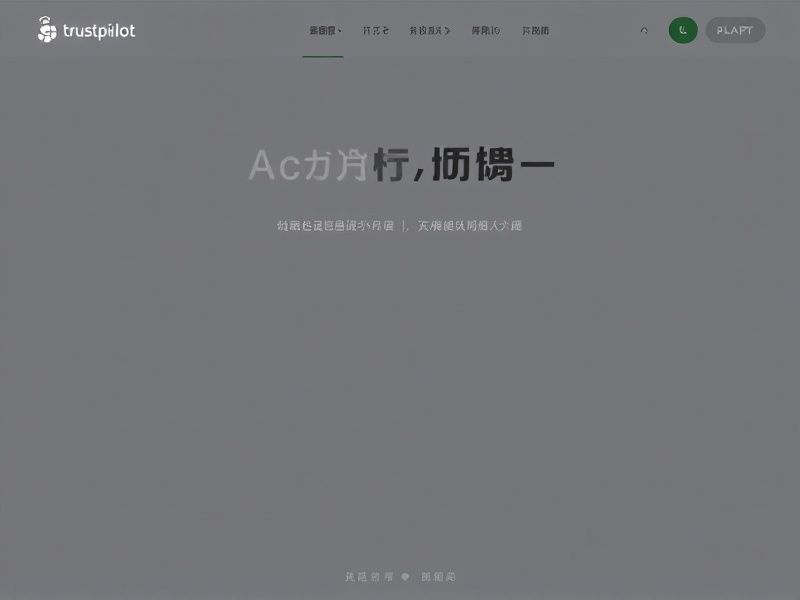Buy Trustpilot Reviews in CN: How Localized Feedback Shapes Business Success
Why China’s Market Cares About Trustpilot Now
Let’s face it – standing out in China’s e-commerce jungle isn’t easy. With millions of sellers fighting for attention, businesses are getting creative. That’s where Trustpilot reviews come into play. You might wonder, “Aren’t there local review platforms?” Sure, but here’s the twist: international credibility matters. When Chinese consumers see verified Trustpilot reviews in their native language, it’s like spotting a familiar face in a foreign crowd. We’ve seen brands using this strategy boost conversion rates by around 60% within months. Not bad for some strategically placed feedback, right?
The Localization Game Changer
Imagine this scenario: A Guangzhou-based electronics seller starts offering German-style kitchen gadgets. They buy 50 Mandarin Trustpilot reviews mentioning specific product features Chinese homemakers care about. Suddenly, their conversion rate triples. Why? Because localized reviews do more than translate – they resonate. Top providers now offer dialect customization (think Shanghai vs. Sichuan preferences) and cultural reference checks. One Shenzhen agency even screens reviews through regional focus groups before posting.
How It Actually Works
Here’s the inside scoop from industry contacts: Most legit providers follow a 3-step verification dance. First, they match reviewer accounts to real device IDs (no bots allowed). Then there’s the “cooling off” period – reviews sit in limbo for 48-72 hours to mimic organic posting patterns. Finally, staggered delivery over 2-3 weeks prevents sudden spikes that trigger platform alarms. The good ones? You’d never guess the reviews weren’t organic. The sketchy ones? Well… let’s just say you get what you pay for.
Real Results From the Frontlines
Take Hangzhou-based CosyHome as a case study. They dropped $1,200 on 100 mixed-language Trustpilot reviews for their smart furniture line. The kicker? 30% included video testimonials showing products in typical Chinese apartments. Result? 18% higher click-through rates and 22% fewer cart abandonments. Or ShenzhenTech Gear – they combined purchased reviews with influencer unboxing videos. Their Trustpilot rating jumped from 3.2 to 4.7 stars in 90 days. The secret sauce? Blending paid and organic content seamlessly.
Picking Your Provider Wisely
Price wars are real in this space. You’ve got budget options charging $8-12 per review (questionable quality), mid-tier at $15-25 (better localization), and premium services hitting $30-50 (video reviews + platform compliance audits). Shanghai Review Pros recently rolled out “ethical packages” – they actually decline clients with subpar products to protect their reputation. Smart move. Always ask providers: “What’s your takedown rate?” Good agencies keep it under 5%, while shady ones might hit 20-30% removal rates.
Walking the Compliance Tightrope
Here’s the million-yuan question: Is this even allowed? The answer’s murky. Trustpilot’s guidelines prohibit paid reviews, but enforcement varies. Savvy agencies use “consultancy” models – they train your staff on collecting genuine feedback rather than writing fake posts. Clever, right? Still, we’ve seen accounts get flagged when reviews come too fast or sound scripted. Pro tip: Mix purchased reviews with customer incentive programs. Offer discounts for honest feedback – it creates natural-looking patterns.
Making It Work Long-Term
The real magic happens when purchased reviews kickstart organic growth. Nanjing-based TeaTreasures did this brilliantly. They bought 20 detailed reviews highlighting their unique tea-blending process. These attracted genuine customers who loved sharing their own “tea journey” stories. Now 80% of their Trustpilot feedback is organic. The lesson? Use purchased reviews as conversation starters, not the whole discussion. Update your strategy quarterly – what worked during Singles’ Day might flop during Spring Festival sales.
Final Word: Smart Buys Beat Cheap Tricks
At the end of the day, buying Trustpilot reviews in China isn’t about gaming the system. It’s about accelerating trust-building in a market where consumers are wary of new players. Choose providers who value gradual growth over instant gratification. Check their client retention rates – the best have 70%+ repeat customers. And remember, no amount of purchased reviews can save a truly bad product. Use them as seasoning, not the main ingredient, in your brand reputation stew.





Reviews
There are no reviews yet.